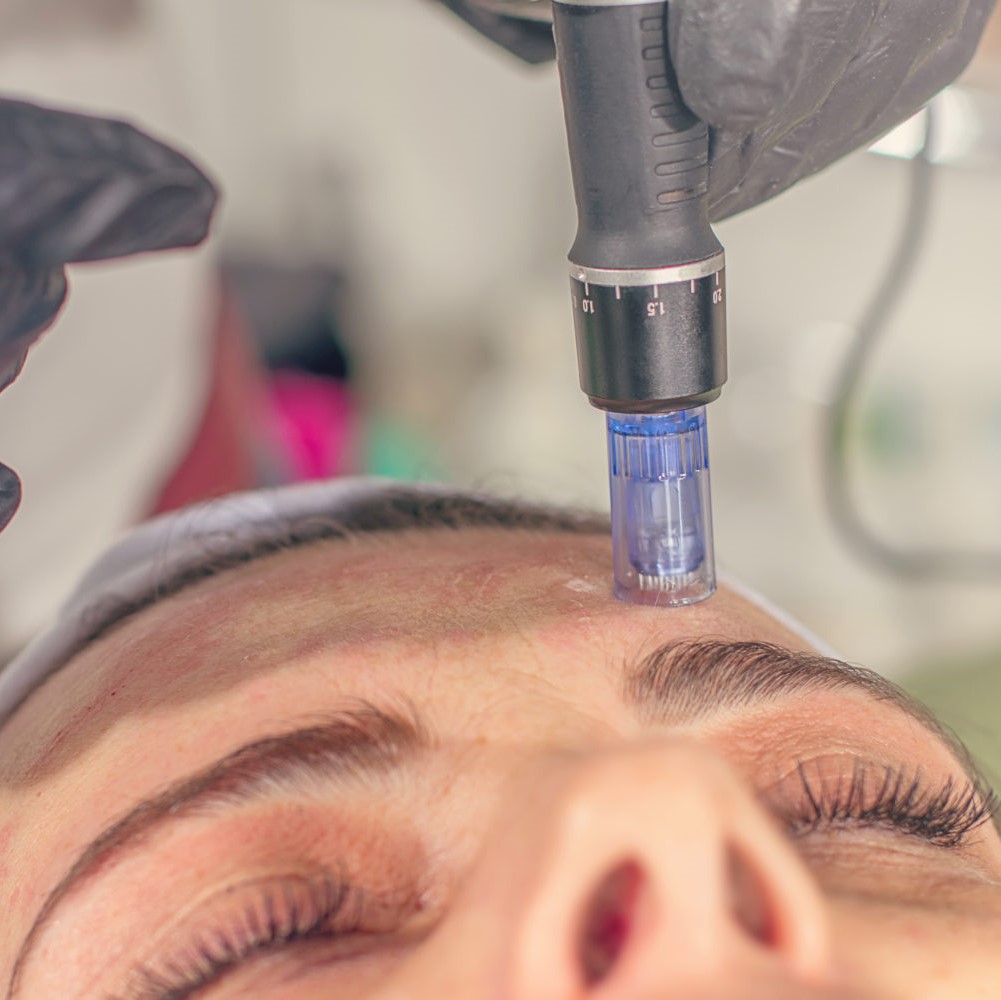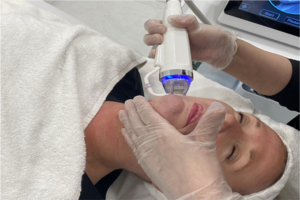
Microneedling (Derma Stamp / Derma Roller)
Medical skin-needling is an established clinical procedure showing clinical results and skin improvements that are well undisputed. Peer studies and clinical reviews have established it as an effective treatment with an excellent safety profile. Its suitability for all skin types has made it a key treatment for acne scarring, sun damaged and ageing skin, fine lines, wrinkles and stretch marks.
The introduction of Skin Rejuvenation provides advanced, electronic medical skin needling, a procedure that stimulates skin to regenerate and repair itself naturally and safely, creating smoother, brighter, younger and healthier looking skin.
Skin Rejuvenation is only available from medical practitioners and authorised clinics using the Dermastamp CE marked medical device.
How Does The Dermastamp Work?
The precision engineering of the Dermastamp device, enables the practitioner to accurately control the intensity of the eDS™ Skin Rejuvenation procedure by adjusting the needle depth and needle speed depending on the area being treated and the clinical condition of the skin. The Skin Rejuvenation treatment has an excellent comfort level and this will normally be made more so by the application of a topical anaesthetic prior to treatment. Alongside this and to further enhance the efficacy and comfort of the treatment, the practitioner will incorporate a medi-grade, skin hydrating and enhancing solution to the treatment area providing an advanced mesotherapy procedure.
Creating a wound healing cascade, collagen and elastin is stimulated and skin appears smoother, brighter and tighter.
Results You Can Expect:
Skin is rejuvenated, with an increase in collagen and elastin leading to a healthier looking skin. Common problems such as sun damage, premature ageing, skin laxity and discolouration, are all significantly improved.
Derma Pen
- Lines & Wrinkles
- Sun Damage
- Skin Laxity
- Acne Scars
- Stretch Marks
Radiofrequency microneedling
Radiofrequency microneedling is a cosmetic procedure. It uses tiny needles and radiofrequency waves to rejuvenate facial skin. The treatment is a form of controlled skin injury. The damage stimulates the growth of healthy new skin, which can benefit common skin issues like acne scars and wrinkles. Compared with treatments like chemical peels and dermabrasion, radiofrequency microneedling is minimally invasive. Read on to learn about the procedure, side effects, and benefits.

What is radiofrequency microneedling?
Microneedling uses a fine needle to create micro wounds, or channels, in the skin. This triggers the production of capillaries, elastin, and collagen. It’s also called skin needling or collagen induction therapy. If the procedure also uses radiofrequency waves, it’s called radiofrequency microneedling. The needle releases radiofrequency into the channels, causing additional damage. This enhances the effects of standard microneedling. The skin that grows back is thicker and smoother. This can target:
- fine lines
- wrinkles
- stretch marks
- appearance of large pores
- acne scars
- scars from injury or surgery
- hyperpigmentation
- loose, sagging skin
- cellulite
- hyperhidrosis microneedling with platelet-rich plasma (PRP)
Who’s an ideal candidate for radiofrequency microneedling?
Radiofrequency microneedling is considered safe, but it isn’t appropriate for everyone. You may be an ideal candidate if you:
are in good health have early signs of aging have realistic expectations Alternatively, you should avoid the treatment.
- if you are using Retinol, Accutane
- have a moderate to severe skin disease (Psoriasis)
- receiving Chemotherapy
- Pregnant
- Anticoagulants
- Have a history of keloid scarring
Procedure
- Your healthcare provider cleans your skin with alcohol to prevent infection
- They apply a topical aesthetic to the treatment area about 30mins before the procedure. In some cases, they might inject a local anaesthetic instead.
- The anaesthetic numbs the area, so you won’t feel pain.
- The microneedling device makes tiny wounds in the skin. Simultaneously, the tip of the needle releases radiofrequency waves into the wounds.
What’s the radiofrequency microneedling procedure like?
The procedure takes 10 to 20 minutes. The exact duration depends on what you’re treating.
A healthcare provider may apply a growth solution to support cell regeneration. They finish with a soothing solution to minimize any discomfort.
After the procedure, you can return to normal activities.
Aftercare will be provided on leaving the clinic.


